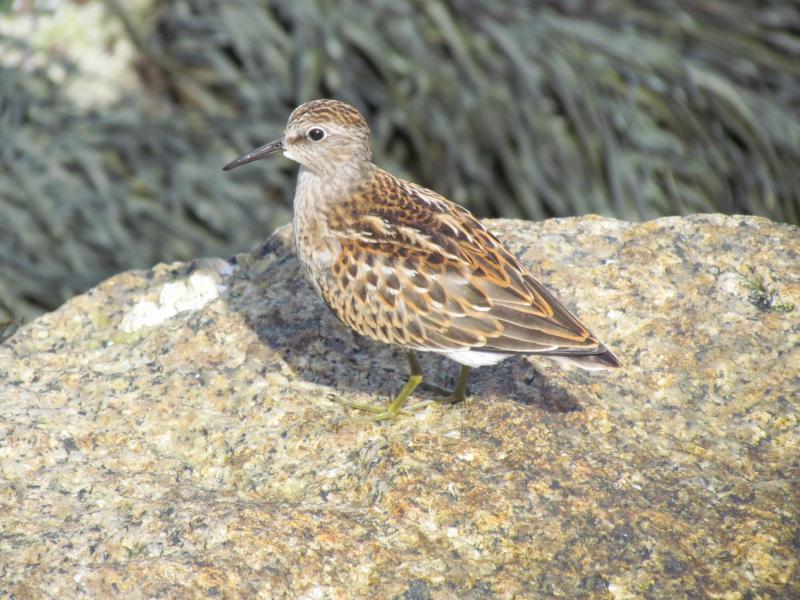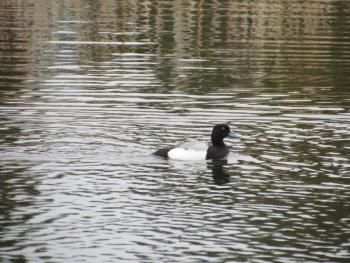There are only a few months left now in our Mindfulness Big Year. If you’re reading about it for the first time or it sounds vaguely familiar to you, a Big Year is a birding challenge to find as many species of birds as possible during one calendar year within a predefined region. People do Big Years at scales from the largest possible (the entire world) to a country, state, county, city, or even in a backyard. In the waning days of 2018, we decided to do a Big Year within Maine in 2019.
Our motivation was not to break Maine’s Big Year record, since, with full-time careers, we didn’t have the time or, honestly, the inclination to devote all of our “free” time to such a pursuit. Instead, we wanted to use the idea of a Big Year to motivate ourselves to be mindful, throughout the course of the changing seasons of one year, of the ways that a diversity of birds live their lives around us here in Maine. And, yes, it’s true: to see as many species as possible, within reason.
And we are feeling pretty satisfied. Our Mindfulness Big Year has sharpened our focus to consider which birds are here, when they are here, and where they are here. And we’ve seen quite a lot of different species, from the common to the extremely rare.
Now as fall has descended upon us in earnest, we are considering the birds that we missed earlier in the season and the ones that may be still passing through or are yet to come.
Sandpipers, plovers, and other shorebirds are one group that we didn’t succeed in spending as much time in mindful pursuit of as we might have liked. Still, species like dunlin and white-rumped sandpiper (neither have made it onto our Big Year list yet) are among the last of their kind to migrate through Maine. Perhaps we will find time for a trip to the coast soon, where we can stand at the edge of a bay of mudflats enjoying the salt air as the tide rises and pushes tiny far-off specks of sandpipers closer into view—eventually close enough to readily identify them.
A scan of our Big Year list also shows we have some notable misses in the waterfowl. Fall is one of the best times to look for ducks and geese. We are also very fortunate that perhaps the best place to see the greatest diversity of ducks in Maine is not too far away. Sabattus Pond, just east of Lewiston, has become known for the build up of hundreds of ducks in October and November each year. The list of species can include lesser and greater scaup, ruddy duck, ring-necked duck, common goldeneye, green-winged teal, northern pintail, American wigeon, and many others. We’ll soon be making a trip to add some of these species to our Mindfulness Big Year list.
For those who have been following our Mindfulness Big Year pursuit, our list now stands at 214 species. Our last new species was black skimmer, a bird not normally found in Maine, but one of a number of southern species swept northward by Hurricane Dorian. Groups of black skimmers were found at a number of locations along the Maine coast with one of the largest concentrations at Hills Beach in Biddeford, which is where we saw ours.
We hope you, too, will find some time to get outside, enjoy, and be mindful of the birds around us.
Jeffrey V. Wells, Ph.D., is a Fellow of the Cornell Lab of Ornithology and Vice President of Boreal Conservation for National Audubon. Dr. Wells is one of the nation's leading bird experts and conservation biologists and author of “Birder’s Conservation Handbook”. His grandfather, the late John Chase, was a columnist for the Boothbay Register for many years. Allison Childs Wells, formerly of the Cornell Lab of Ornithology, is a senior director at the Natural Resources Council of Maine, a nonprofit membership organization working statewide to protect the nature of Maine. Both are widely published natural history writers and are the authors of the book, “Maine’s Favorite Birds” and “Birds of Aruba, Bonaire, and Curaçao: A Site and Field Guide” from Cornell Press.































